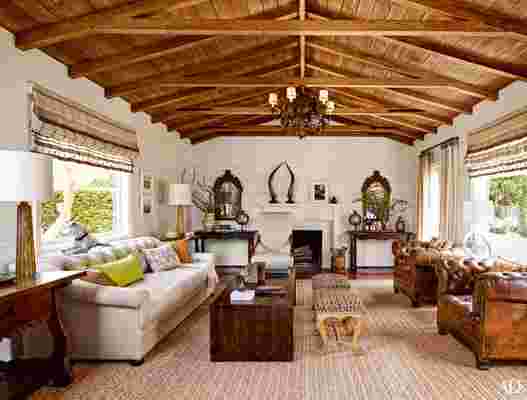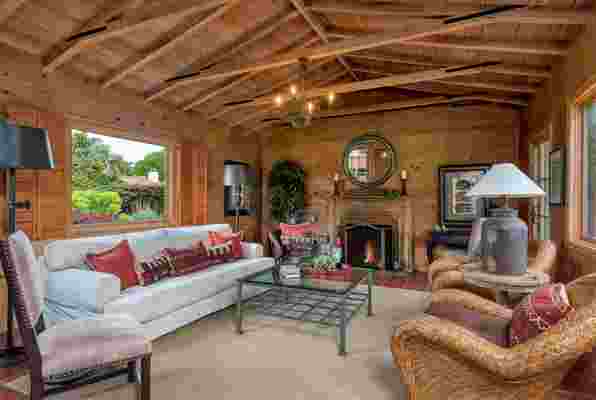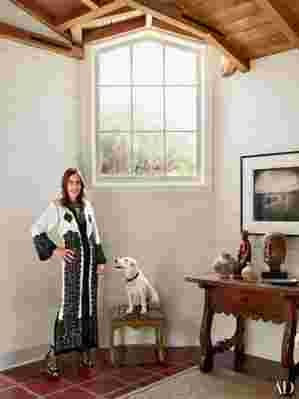Honestly I had no intention of buying a house that day. I had told my real-estate broker I needed to put my search for a Santa Barbara getaway on hold while my husband, writer Steve Oney, was away at Harvard on a five-month fellowship. It didn’t seem like a good idea to purchase a home in his absence. But she sent an email with images just enticing enough for me to call a friend whose family has lived in the area for generations and ask him to go on a scouting mission. His report was decisive: “You must come and see this house.” I made the hour-and-a-half drive up from Los Angeles the very next day.
I found the house and location so beguiling that I made an offer on the spot. The modest Spanish Colonial Revival bungalow was one of several dwellings built as artists’ studios in the 1930s in a charming landmarked enclave called El Caserio, which loosely translates as “the Compound.” Some have been remodeled (a few by Lutah Maria Riggs, the brilliant successor to George Washington Smith, Santa Barbara’s architectural saint), and many have remained in the same hands for more than 40 years. The compound is in a historic Santa Barbara neighborhood around the corner from the Presidio, a fort built by the Spanish in 1782. While that might not sound impressive in other parts of the world, it’s ancient by West Coast standards. In fact, the Presidio is the second-oldest building in California.
RELATED: How Madeline Stuart Decorated Her Airy Santa Barbara Den
I don’t recall thinking much about whether the house was a sound investment. I just knew I wanted a place where Steve and I could take long walks with our dogs, Beatrice and Mr. Peabody, shop at the farmers’ market (one of the best in the country and just a few blocks away), and find a measure of peace whenever we could escape from L.A.
Perhaps I should have considered how much work our little Casa Caserio, as I call it, was going to require. Given my chosen profession as a designer, you’d think I would have paid more attention to the deplorable condition of the wiring, the dreary pine paneling, the dilapidated storage shed in the backyard, and the problematic circulation. To get to the only bedroom, you had to pass through a bathroom—not an ideal route, even if my husband and I have been married for 30 years.



But once the deal was done, I set myself to the task of resolving the structure’s architectural problems, the worst involving that bedroom, a feng shui nightmare with no parallel walls. I quickly realized I’d taken on far more than a cheap and cheerful fluff project. The house wasn’t quite derelict, but in order to do the place right, I needed to take a holistic approach to the renovation .
